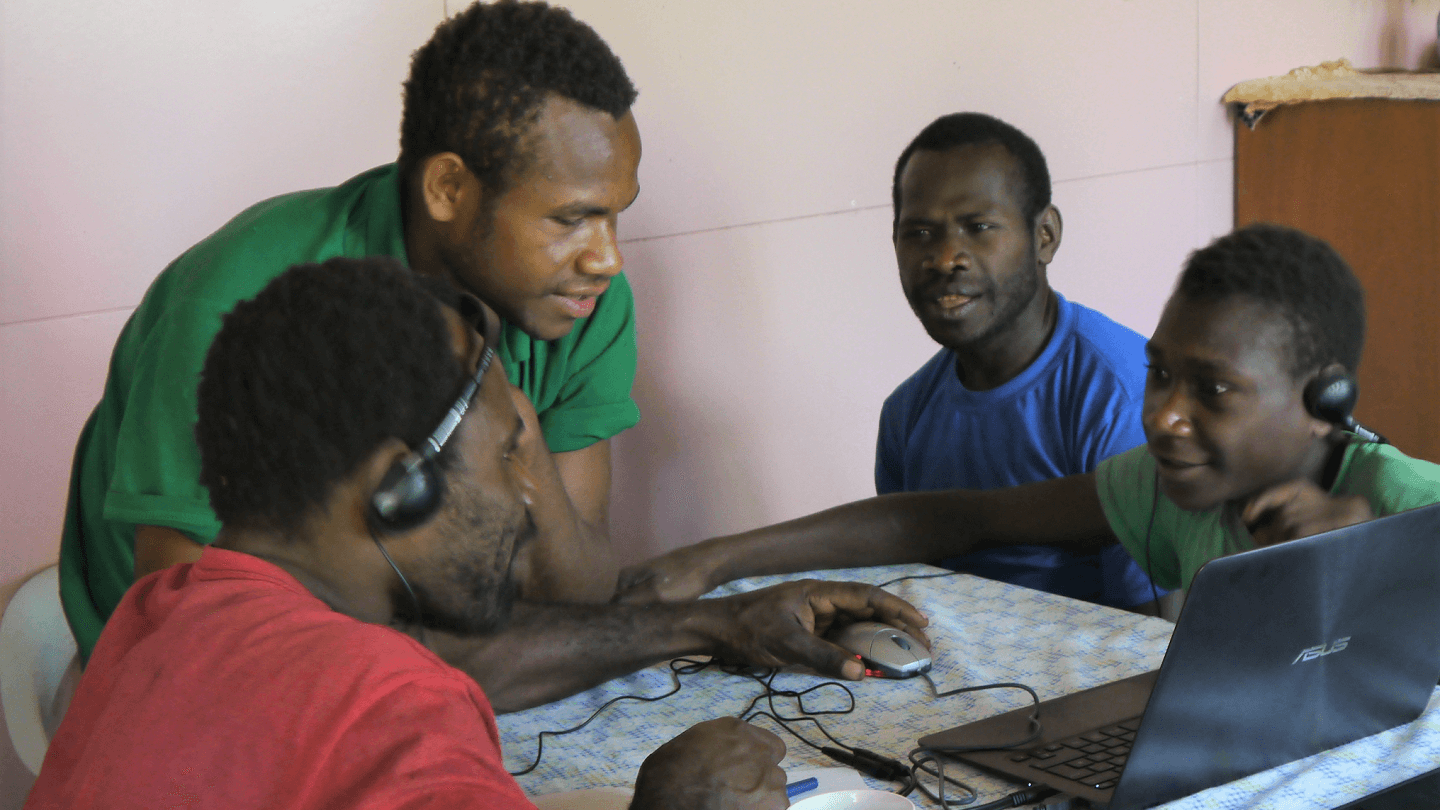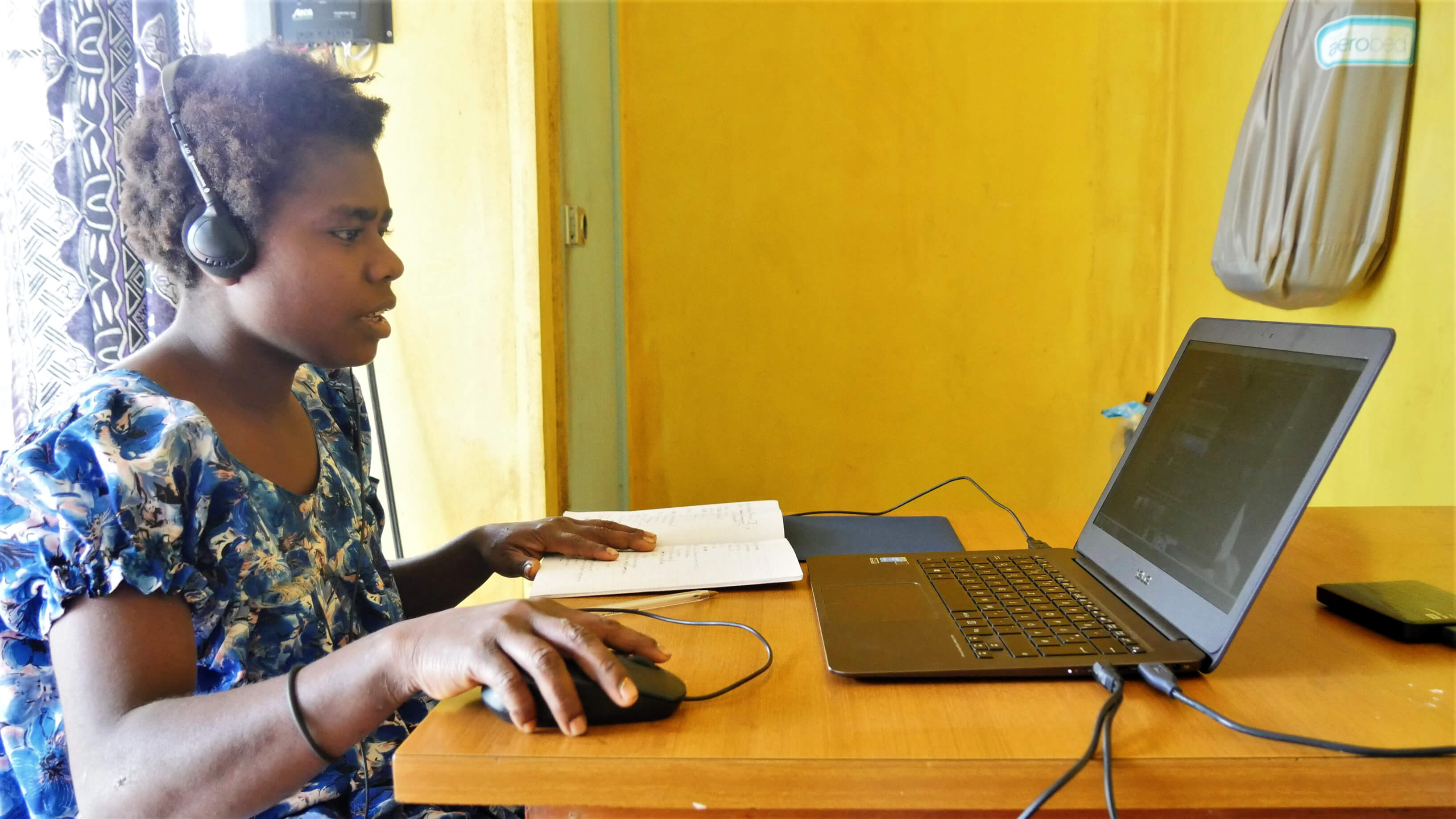Our project documents child language among the Qaqet: the language that parents, adults and other children speak around and with young children, the language that young children themselves speak, and the cultural practices by which children are socialized into becoming competent speakers of the Qaqet language and responsible members of Qaqet society. Below you see some of our Qaqet colleagues engaged in different project activities.
At the heart of our project is a longitudinal corpus, which allows us insights into the linguistic development of the children. A number of Qaqet families regularly record their children on video each week for one hour, over a period of one year or more. They record them during their typical day-to-day activities – at home, in the bush or in the garden; interacting with adults and other children; playing and singing, eating food, chatting, relaxing or helping around the house and garden. In some cases, we have supplemented the natural recordings with staged recordings, where children play with books, toys and other materials that we provided.
Some families come from the remote village of Raunsepna, where children grow up largely monolingually. And others come from the accessible village of Kamanakam, where children grow up multilingually, acquiring Qaqet and Tok Pisin at the same time. This setup allows us to compare monolingual and multilingual acquisition.





